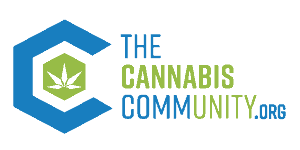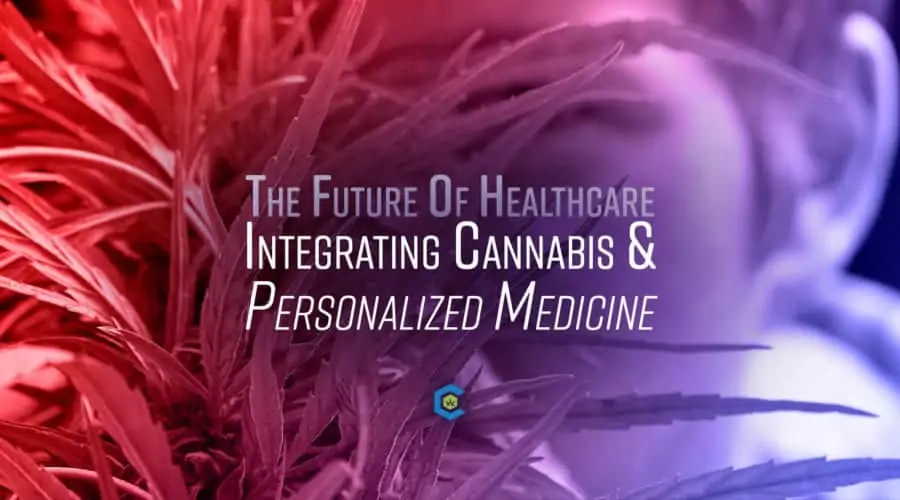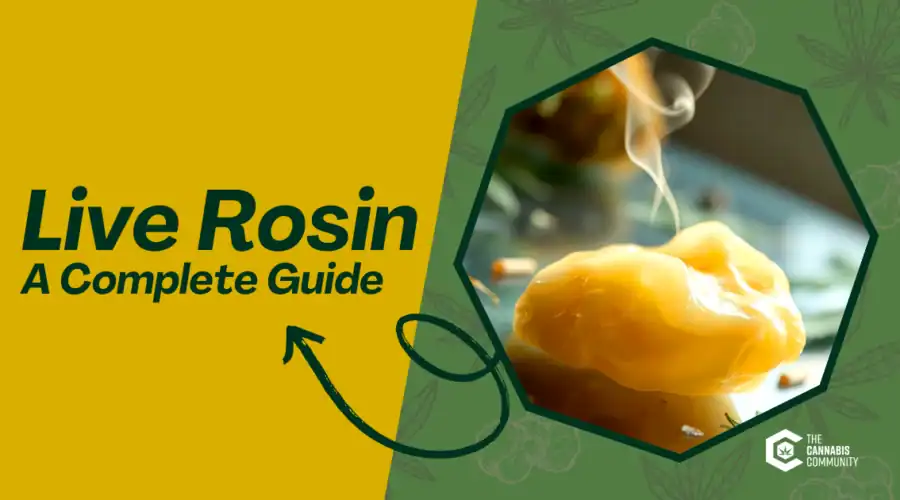Integrating Medical Cannabis with the Future of Healthcare
Table of Contents
The Promise of Personalized Medicine
The term “personalized medicine” carries the promise of a progressive and holistic approach to healthcare, tailoring treatments to individual patients instead of pathologies. Healthcare providers are now beginning to develop patient-tailored treatments based on “clinical, genomic, and environmental information” unique to every individual.1
Where does this information come from, and how can we use it to personalize medicine? And how does cannabis fit into the picture?
The answers forecast the future of healthcare and are the basis of exploration in this unique review investigating the integration of medical cannabis with personalized medicine.
“It is more important to know what sort of person has a disease than to know what sort of disease a person has.”
– Hippocrates
P4 Medicine: The Healthcare Revolution
Pioneered by Dr. Leroy Hood, P4 medicine is a revolutionary new perspective on medical practice founded on four pillars: Predictive, Preventive, Personalized & Participatory.2 Rather than seeing a doctor when patients get sick, these new approach advocates for basing treatment heavily on the use of technology, family history, and genetics to prevent disease.
By understanding a patient’s family history and genome sequence, better predictions can be made about what conditions to watch out for with a known genetic component (e.g., addiction, depression, heart failure, high blood pressure, etc.)1
As the study of medicine continues, it’s becoming more evident that virtually all diseases have a genetic component in one way or another; the question is, to what degree?3 By asking the right questions, we can start taking the right precautions to avoid disease later in life.
Tell Me, and I’ll Forget, Show Me, and I’ll Understand
The advent of personalized medicine is all about the individual patient, not the disease. This new system can only function optimally when patients are involved in their treatment, too (something that will be discussed later). Thus, the authors thought it would be helpful to the reader if we used an example to help illustrate these new concepts so that readers and future patients can better understand their role in achieving good health.
The Mary Jane Doe Scenario: A Fictional Case Study to Better Understand the Future of Healthcare
Mary Jane Doe is an 18-year-old female of average height and weight and is generally healthy. Mary is going to help us understand what the future of medicine could look like and how medical cannabis plays a vital role in making the healthcare revolution a reality.
What the Patient Can Expect
Mary Jane is hoping to change the world alongside her free-spirited peers. Before heading off to Colorado State to fulfill her dream of designing the newest hemp-based biofuel, she goes to her doctor to get a physical. She follows the usual routine—standing on the scale, sucking on a thermometer, and getting strapped to a blood pressure cuff. While this is all reasonably straightforward, personalized medicine needs more; it needs to know Mary Jane, the person.
The Family History: Same Questions, Better Reasons for Asking
The physician asks Mary for her family history. She reports that alcoholism, Alzheimer’s disease (AD), and irritable bowel syndrome (IBS) all run in the family. While these questions are normal, it’s how we make better use of the data that makes all the difference.
Genetic Testing: A Simple but Powerful Step
The doctor then orders genetic testing for Mary, which she can easily do inside the office after her appointment. Mary is given two long Q-tips and swabs the insides of both her cheeks, puts the sample in a sterile bag, seals it, and places it in the care of the medical staff at her physician’s practice. The staff carefully finishes packaging the sample and will mail it off for testing and await the results.
Knowing Where to Look: An Honest & Detailed Family History Helps
The Q-tips contain Mary’s DNA, which can be extracted, sequenced, and screened for those particular genetic markers that we know predispose a person to a host of diseases. Using the family history obtained by the physician, the doctor will know what to look for when evaluating the results of Mary’s genetic testing.
Disease, Genetics & P4 Medicine: Putting the Pieces Together
Research into the genetic factors that contribute to the pathogenesis of various diseases has evolved significantly over the years, with virtually all diseases being known to have some degree of genetic etiology.3 When patients report a family history of the disease, there’s an extremely high likelihood it is at least somewhat genetically rooted, giving doctors an idea of what to look for when screening a patient’s DNA.
What To Look For In Mary’s Genetic Testing Results
In Mary’s case, one of the first markers her doctor looked for were those known to encourage the formation of AD by promoting the formation of “plaques” or “tangles” in Mary’s brain.4
Other important markers to look for will be those relating to GI issues such as IBS (reported in Mary’s family history), but also Crohn’s and UC since IBS is so poorly understood and the utility of genetic testing in developing preventative treatments and testing the potential efficacy of the medication is still evolving in the field of gastroenterology.5
Finally, the physician would be wise to investigate whether Miss Jane is genetically predisposed to addiction and overall mental illness (as the two often go hand in hand), as this could affect the type of treatment she could receive, as well as information for Mary to be mindful of.6,7
Once it becomes known that the patient has both a family history of the disease and a genetic predisposition, preventative approaches can be taken that are specific to preventing the disease in the first place. In Mary’s case, genetic markers were identified for all three conditions: AD, IBS/GI issues, and Alcoholism/Addiction. How should her physician proceed with this information, and how can cannabis help Mary? This is where things get curiously exciting.
Attacking Alzheimer’s Disease with P4 Medicine
Thanks to immense sequencing studies and genetic research into Alzheimer’s, almost two dozen distinct and unique genetic biomarkers have been identified as risk factors for early and late-onset AD.8 As such, Mary’s physician has a lot of different genetic markers to look for to assess Mary’s risk for developing AD in her later years.
The neuropathology of AD is characterized by the formation of β-amyloid (Aβ) protein plaques, neuron loss, and neurofibrillary tangles comprised mainly of “hyperphosphorylated tau protein”.4 Phenotypically, AD classically presents with chronic and progressive dementia that reaches levels so severe that patients forget the identity of close family members, spouses and eventually, simple tasks such as brushing their own teeth and the meaning of certain words.9
Therefore, preventative treatment should focus on retaining the integrity of Mary’s memory and cognitive functions. There are a host of treatments, including active chemicals in botanicals such as cannabis, that are known to be neuroprotective and neuro-regenerative, that will help Mary in this process.
Active Chemicals in Botanicals Target Certain Disease Pathways
There is currently intensive research underway to identify botanicals that have clinically significant physiological effects. For instance, Mary should be advised to include the spice turmeric in her diet, which contains the active ingredient curcumin, as it’s known to be clinically effective against AD and even cancer formation.10 The exploration of therapeutic botanicals is also where cannabis finally fits into the picture.
Cannabinoid Therapy & Battling Disease
Natural cannabinoids and terpenoids from the cannabis plant have been shown to be efficacious in treating a wide variety of illnesses and diseases. In the instance of Mary, using naboximols (brand name: Sativex; a specific 1:1 whole plant formulation of cannabis by GW Pharma) should help to reduce plaque formation in her brain, reduce oxidative stress, reduce anxiety and even improve dopamine transmission (thus helping reduce Parkinson’s development as well). 11,12
It has even been shown that the terpene’s limonene and alpha-pinene prevent “alpha-synuclein fibrillar formation in PD, amyloid fibrillization in AD, and biofilm formation…” all of which are crucial in the prevention of Alzheimer’s.12–15 Thanks to the implementation of personalized medicine, Mary Jane Doe might be able to avoid the disease that has plagued her family’s genetics.
Preventative Medicine: A Radically Different Approach to Health
This is a completely different approach to medicine than the one that has been in practice for decades. The old dogma—where patients only go to the doctor once they’re already sick—is being abandoned. Preventative medicine is the crux of personalized healthcare in the future. To really understand the role cannabis plays, we must dig deeper into the science behind personalized medicine and how it works.
Being Proactive in the Treatment of Pain
Part of P4 medicine is the element of participation by all members of a treatment team, including the patient.
Having an open and honest dialogue between the physician and patient is crucial so that important information that might affect the quality of treatment or even threaten the patient’s health is not overlooked.
For example, patients with a history of drug or alcohol abuse, or those who have a family history of addiction, should be encouraged to share this information honestly with their physicians.
In the future, if a patient with fibromyalgia has a history of alcoholism or drug addiction, along with genetic markers that indicate the same, physicians may be advised to try cannabinoid therapy before the more traditional yet highly addictive, opioid-based painkillers to treat their pain.
Cannabis has been shown to be extremely effective in the treatment of neuropathic pain, as well as a successful adjuvant and alternative to opioid pain medication.16,17
The future of personalized medicine has already started to integrate itself into the burgeoning medical cannabis industry.
Cannabis Sativa is a rich tapestry of over sixty known phytocannabinoids and over four hundred terpenoids, all working harmoniously in diverse cellular signaling cascades and biological processes across the human body.18,19
The same genetic screening technology used to sequence the human genome was used to identify the genome of the Cannabis Sativa plant.
As we better understand our own biology, as well as that of cannabis, we are able to use science and research to connect the dots and cultivate the best cannabinoid-based therapy regimen for each individual patient.
How Medical Cannabis & P4 Medicine Work Together
Medical cannabis fits into the P4 model in a powerful way. There are virtually limitless combinations of active chemicals in each of the thousands of cannabis strains.
Add to that the incredible diversity of switches and levers in the human body that these phytocannabinoids and terpenoids act upon, adding yet another dimension of complexity and diversity.
Now consider the fact that our body creates its own endogenous cannabinoids, or “endocannabinoids” (2-AG & anandamide being the most well-known), that also modulate the same switches and levers.
When cannabis is used and the active chemicals flood into the body, they work in tandem with the body’s intrinsically produced endocannabinoids.
Diversity as a Double-Edged Sword: Complex, Versatile & Confusing
The sophistication of cannabis pharmacology, while being the foundation underscoring its ability to treat such a wide variety of conditions, also makes finding the optimal cannabinoid therapy regiment for a patient very challenging.
Cannabis has co-evolved with humanity for centuries, sharing a bond through the uncommon levels of intra-species diversity exhibited by humans and C. Sativa.
While it is this incredible diversity of the cannabis plant that makes it a powerfully versatile medicine, it also makes choosing the right medicine to reach personal treatment goals a daunting task for patients.
In the blossoming world of medical cannabis, how does one choose the right products to help them achieve the health and happiness they have been seeking for so long?
Everyone Responds to Medical Cannabis Differently
As medicine evolves, cannabis continues to show promise in the treatment of an expanding list of conditions in a wider variety of patients. Every human being is different, but so are the nuances in the pathophysiology of the disease, even if two patients present with the same condition.
Understanding the different biomarkers through genetic and high-throughput testing, as well as the identification of particular genes, proteins, and physiological systems in the patient, is crucial to tailoring efficacious cannabinoid therapy.
The complexity of cannabinoid pathways, as well as the “individual genetic predispositions” that modulate how different individuals process cannabinoids, ultimately leads to a wide variety of different “body responses” to cannabinoid therapy.20
This can make predicting the effects of a strain or cannabis product difficult, as it cannot simply be extrapolated to represent the entire population.
To combat this challenge, researchers are attempting to determine an optimal cannabinoid therapy by looking for the expression of certain genes that affect how cannabis works in the body.
Pharmacogenetics of Cannabis
The early days of human genome sequencing were slow and expensive. The Human Genome Project (HGP) began with a $3.5 billion dollar investment, and a 15-year expedition before the entire human genome was sequenced.21
Eventually, first-generation sequencing evolved to second-generation sequencing, and today, with the rapid evolution of science and medicine, we are on the cusp of third-generation sequencing, which will offer the opportunity to delineate all of the unique genetic variability in humans and other organisms.21
Polymorphisms are Genetic Signatures of Natural Selection
So how can we translate information and advancements in technology (e.g., genetic testing) to better educate patients and clinicians in selecting the right product from a patient’s dispensary?
Patients sometimes express slight genetic variations known as genetic polymorphisms: multiple forms of a single gene that are present in a population.20,22
What may have been an “accidental mutation” at one point in time for an organism may have actually conferred it a survival advantage (e.g., a mutation giving early giraffes a longer neck).
Thus, polymorphisms are literally signatures of natural selection—the process caught in action.
Small, subtle changes in the coding of a gene can have profound impacts on the pathology of disease and the efficacy/toxicity of medications.23
Polymorphisms can cause a partial or complete knockout in the production of crucial proteins needed to metabolize drugs or fight disease.

P450 Genotyping to Determine How an Individual May Respond to Drugs
The genes related to the expression of the P450 family of cytochromes are fundamental to the metabolism of a large variety of drugs (particularly psychiatric and psychotropic drugs) and thus, any variation in their expression will be helpful to know.24
Identifying these polymorphisms is crucial in tailoring the best drug treatment and avoiding any preventable complications. Let’s take a look to see if Mary has any known genetic polymorphisms.
Mary’s P450 Genotyping Reveals P450 CYP2D6 Polymorphism
Mary’s results show she is homozygous recessive for the CYP2D6 cytochrome, meaning she is a “poor metabolizer” that makes no copies of this protein.22
This doesn’t mean she can’t metabolize the drugs that normally use this pathway at all, she may just need to adjust her dosage.
However, it isn’t always so simple, as such a polymorphism can have much greater ramifications for the future treatment of pain, the possibility of addiction, contraindications to certain medications, and other important factors yet to consider.
The DXM Dilemma: How Polymorphisms Can Make Therapy Toxic
DXM (dextromethorphan) is a popular over-the-counter cough suppressant that is recognized to be in a family of compounds called NMDA antagonists.
The NMDA antagonists Ketamine and PCP act as anesthetics at higher doses; however, both are classically known for their dissociating, hallucinogenic-like qualities at sub-anesthetic doses.25
The recommended therapeutic dosage of DXM is 10-30mg; however, supratherapeutic (very-high) doses of DXM can produce powerful dissociation that is similar to Ketamine and PCP, colloquially referred to as “robot ripping”.25,23
What’s more intriguing is the metabolism of DXM requires CYP2D6, a cytochrome Mary is unable to produce. This is the perfect example of how genetic testing and personalized medicine could have a powerful and positive impact by way of preventative and strategic medicine.
CYP2D6 Polymorphism Magnifies Psychoactivity of DXM
While the recommended therapeutic dosage of cough medicine containing DXM containing cough medicine is normally far below those what is required to achieve these dissociative effects, there is a small percentage of the population, like Mary, with a homozygous deficiency in the gene that encodes the cytochrome CYP2D6 (CYP450 2D6) responsible for metabolizing DXM to into its active metabolite, Dextorphan.22
Mary Should Be Wary of Products Containing DXM
Researchers identified a group of patients with this polymorphism who were found to be “poor metabolizers” of DXM who could barely tolerate 3mg/kg doses, while “extensive metabolizers” had no issues with doses between 3-6mg/k.22
However, while poor metabolizers need far less of the drug to feel its psychoactive effects, patients who were “poor metabolizers” reported greater sedation and dysphoria (the opposite of “euphoria”; they didn’t like it).22,23
Nonetheless, since DXM is a drug of abuse and so little of it is needed to produce a potentially dissociative or hallucinogenic experience, Mary’s physician would ideally warn her to try other cough suppressants or to dose DXM-containing products very carefully.
While the general consensus from poor metabolizers was that they didn’t like how DXM made them feel, this doesn’t mean some poor metabolizers may exploit the fact that they don’t need high doses to produce recreational effects.
*The authors strongly advise against the dangerous, harmful, and potentially fatal practice of “robo-tripping”. However, since the authors acknowledge humans have free will, we feel it wise to provide these guidelines to the user that intends to consume DXM in the form of cough medicine:
Some forms of cough medicine contain other toxic ingredients besides DXM when consumed in the doses necessary to produce dissociation.
It is crucial to ensure that the only active chemical listed is dextromethorphan! The medicine should contain NO (1) Guanefesin, (2) Asprin/Acetomenaphin, (3) Antihistamines.
High amounts of these chemicals can cause acute liver toxicity, heart attack, stroke and death.26,27
Polymorphisms Affecting Cannabis Pharmacogenetics
Studies have shown that variations in several genes have direct effects on the “action, metabolism, and the transport of these substances [cannabinoids] in the organism”.28
Just like the polymorphism that makes a small percentage of the population hypersensitive to DXM-containing cough medicine, subtle genetic variations affect how different people metabolize and interact with cannabis.28
Simple genetic testing can identify which gene variants are present in a patient, and that information can be used to determine which cannabinoid and terpenoid profiles cause therapeutic effects compared to those that cause potential side effects.19,28
Currently, it is speculated that the underlying mechanism behind the healing properties of cannabis is largely the result of the “entourage effect.”11
The potential combination of different phytocannabinoids and terpenoid ratios, some of which work synergistically with each other while others oppose each other, fundamentally characterizes the “entourage effect” and is thought to underscore the versatility of cannabinoid therapy.11,12,15
(For a comprehensive exploration of the “entourage effect”, check out this two–part article.)
Chemical Imbalance Can Mean Illness & Disease
It is well established that an imbalance in our bodies’ endogenous (“endo” = inside) neurotransmitters can result in a host of diseases and illnesses.
For instance, the neurotransmitter dopamine can be responsible for many diseases ranging from loss of motor control (e.g., Parkinson’s Disease) to mood disorders like major depressive disorder.
Treating such disorders is possible by supplementing the body and brain with exogenous (“exo” = outside) compounds to make up for the deficit; in the case of major depressive disorder due to dopamine imbalance, ketamine infusion therapy has recently shown immense promise in restoring this balance and rapidly treating depression.29
Endocannabinoid Imbalance & Its Implications in Illness
Likewise, an imbalance in the body’s naturally produced endocannabinoids (2-AG & anandamide, for instance) has been suggested to play a role in various chronic disorders, as the endocannabinoid receptor system is widespread in the human body and brain.30
The official term for this phenomenon is “clinical endocannabinoid deficiency,” and it is important to address this when discussing cannabis as a personalized medical treatment.
Patients like Mary with GI disorders like Crohn’s and IBS must consume different cannabinoids and terpenoids than someone attempting to treat anxiety, migraines or fibromyalgia.
The future of personalized medicine as it involves cannabis means determining the pathophysiology of an individual’s condition, their genetic makeup, environmental influences, and, hopefully, in time, assays to determine exactly where shortages, discrepancies, and imbalances may lie within the endocannabinoid system to better address these issues in a targeted and efficacious manner.
Medical Cannabis: The Antithesis to “One-Size-Fits-All” Medicine
Cannabinoid medicine is the antithesis of the modern “one-size-fits-all” pharmacopeia of single-molecule drugs used in medicine today.
As we identify more biomarkers of disease, we can take further precautions and eventually develop a treatment protocol that is tailored to integrate seamlessly into a person’s lifestyle.
With proper education, genetic testing, and consideration of a patient’s environmental and biological factors impacting their biology, new strides can be expected in successfully treating patients with cannabinoid therapy.
Daring to Look Ahead: A Chicago Practice Embracing the Future of Healthcare
While physicians are beginning to change their perspective on medical cannabis, the ones who are truly embracing it are few and far between. One Chicago practice that is known for its compassion and cutting-edge treatments is going beyond simply giving patients their cards.
Dr. Rahul Khare of Innovative Express Care, perhaps the most notable cannabis-friendly medical practice in Chicago, offers cannabis consultations and telemedicine follow-ups to check up on his medical cannabis patients. Genetic testing is also available at the office. From medical cannabis certifications to ketamine infusion therapy, Dr. Khare and his team of medical professionals aren’t waiting for the future but actively embracing it!
To learn more about my experience at Innovative Express Care, click here!

What to Look Forward to in the Medicine of the Future
The field of personalized medicine is quickly emerging and rapidly evolving. Advances in research and technology are opening up possibilities that were never before available in healthcare.
Using technology (e.g., wearable fitness trackers), we can upload our vitals straight to our devices and share them with our healthcare team.
Gathering biological data and using it to advance treatment is in and of itself a growing field called bioinformatics and is an important part of this healthcare revolution.
Patients will develop entire lifestyles, diets, supplement/nutrient regiments, and, when needed, optimized pharmacological interventions that are designed for them, not their condition, leading to a healthier populace and a greater well-being.
Get a Medical Cannabis Card
Enjoyed This Content? Read More:
-
How to Make Cannabis-Infused Coconut Oil or MCT Oil: Crockpot Recipes
In this guide, you’ll learn how to make cannabis-infused coconut oil or MCT oil, decarboxylate cannabis, or choose to infuse cannabis into any oil of your choice.
-
How to Make THC Gummy Bears with Canna Oil
This is a great no-fail recipe for beginners. The corn syrup in this recipe will help your gummy bears have that nice and chewy texture we’ve all come to love.
-
What is Live Resin? Benefits, Uses, and How It Compares to Other Cannabis Extracts
Discover live resin, a flavorful cannabis concentrate made from fresh cannabis plants. Explore its benefits, uses, and how it compares to other extracts.
-
What is Live Rosin? A Detailed Guide to this Premium Cannabis Extract
Live rosin is becoming increasingly popular among cannabis enthusiasts for its unique qualities and extraction process. This guide delves into the intricacies of live rosin, distinguishing it from other cannabis concentrates like live resin and traditional rosin. Understanding live rosin not only enhances your cannabis experience but also guides your choices when selecting products from…
-
Cannabis Vape Hardware Guide for Pros: What You Need to Know
Expert tips to elevate your vaping experience. Explore the latest innovations to get the most satisfaction from your favorite cannabis vape hardware device.
REFERENCES
- Chan, I. S. & Ginsburg, G. S. Personalized medicine: progress and promise. Annu. Rev. Genomics Hum. Genet. 12, 217–244 (2011).
- Flores, M., Glusman, G., Brogaard, K., Price, N. D. & Hood, L. P4 medicine: how systems medicine will transform the healthcare sector and society. Pers. Med. 10, 565–576 (2013).
- Alliance, G. & Health, D. of C. D. of. Diagnosis of a Genetic Disease. (Genetic Alliance, 2010).
- Yi, L., Wu, T., Luo, W., Zhou, W. & Wu, J. A non-invasive, rapid method to genotype late-onset Alzheimer’s disease-related apolipoprotein E gene polymorphisms. Neural Regen. Res. 9, 69–75 (2014).
- Spiller, R. Irritable bowel syndrome: new insights into symptom mechanisms and advances in treatment. F1000Research 5, (2016).
- Langås, A.-M., Malt, U. F. & Opjordsmoen, S. Comorbid mental disorders in substance users from a single catchment area – a clinical study. BMC Psychiatry 11, 25 (2011).
- Hartwell, K. J., Tolliver, B. K. & Brady, K. T. Biologic Commonalities between Mental Illness and Addiction. Prim. Psychiatry 16, 33–39 (2009).
- Van Cauwenberghe, C., Van Broeckhoven, C. & Sleegers, K. The genetic landscape of Alzheimer’s disease: clinical implications and perspectives. Genet. Med. 18, 421–430 (2016).
- Alzheimer’s disease: Overview – Informed Health Online – NCBI Bookshelf. Available at: https://www.ncbi.nlm.nih.gov/books/NBK279360/. (Accessed: 1st January 2019)
- Premkumar, L. S. Transient Receptor Potential Channels as Targets for Phytochemicals. ACS Chem. Neurosci. 5, 1117–1130 (2014).
- Russo, E. B. Taming THC: potential cannabis synergy and phytocannabinoid-terpenoid entourage effects. Br. J. Pharmacol. 163, 1344–1364 (2011).
- Russo, E. B. Cannabis Therapeutics and the Future of Neurology. Front. Integr. Neurosci. 12, (2018).
- Soni, D., Smoum, R., Breuer, A., Mechoulam, R. & Steinberg, D. Effect of the synthetic cannabinoid HU-210 on quorum sensing and on the production of quorum sensing-mediated virulence factors by Vibrio harveyi. BMC Microbiol. 15, 159 (2015).
- Subramenium, G. A., Vijayakumar, K. & Pandian, S. K. Limonene inhibits streptococcal biofilm formation by targeting surface-associated virulence factors. J. Med. Microbiol. 64, 879–890 (2015).
- Russo, E. B. & Marcu, J. Cannabis Pharmacology: The Usual Suspects and a Few Promising Leads. Adv. Pharmacol. San Diego Calif 80, 67–134 (2017).
- Lucas, P. Cannabis as an adjunct to or substitute for opiates in the treatment of chronic pain. J. Psychoactive Drugs 44, 125–133 (2012).
- Habib, G. & Artul, S. Medical Cannabis for the Treatment of Fibromyalgia. J. Clin. Rheumatol. Pract. Rep. Rheum. Musculoskelet. Dis. 24, 255–258 (2018).
- Chakravarti, B., Ravi, J. & Ganju, R. K. Cannabinoids as therapeutic agents in cancer: current status and future implications. Oncotarget 5, 5852–5872 (2014).
- Atakan, Z. Cannabis, a complex plant: different compounds and different effects on individuals. Ther. Adv. Psychopharmacol. 2, 241–254 (2012).
- Hryhorowicz, S., Walczak, M., Zakerska-Banaszak, O., Słomski, R. & Skrzypczak-Zielińska, M. Pharmacogenetics of Cannabinoids. Eur. J. Drug Metab. Pharmacokinet. 43, 1–12 (2018).
- A window into third-generation sequencing. – PubMed – NCBI. Available at: https://www.ncbi.nlm.nih.gov/pubmed/20858600. (Accessed: 29th December 2018)
- Zawertailo, L. A., Kaplan, H. L., Busto, U. E., Tyndale, R. F. & Sellers, E. M. Psychotropic effects of dextromethorphan are altered by the CYP2D6 polymorphism: a pilot study. J. Clin. Psychopharmacol. 18, 332–337 (1998).
- Carter, L. P. et al. Acute cognitive effects of high doses of dextromethorphan relative to triazolam in humans. Drug Alcohol Depend. 128, 206–213 (2013).
- Perlis, R. H. Cytochrome P450 genotyping and antidepressants. BMJ 334, 759 (2007).
- Trujillo, K. A. et al. The Neurobehavioral Pharmacology of Ketamine: Implications for Drug Abuse, Addiction, and Psychiatric Disorders. ILAR J. 52, 366–378 (2011).
- Lee, W. M. Drug-induced Acute Liver Failure. Clin. Liver Dis. 17, (2013).
- Wogoman, H., Steinberg, M. & Jenkins, A. J. Acute intoxication with guaifenesin, diphenhydramine, and chlorpheniramine. Am. J. Forensic Med. Pathol. 20, 199–202 (1999).
- Pharmacogenetics of Cannabinoids. Available at: https://www.ncbi.nlm.nih.gov/pmc/articles/PMC5794848/. (Accessed: 29th December 2018)
- Dopamine System Dysregulation in Major Depressive Disorders. Available at: https://www.ncbi.nlm.nih.gov/pmc/articles/PMC5716179/. (Accessed: 29th December 2018)
- Russo, E. B. Clinical endocannabinoid deficiency (CECD): can this concept explain the therapeutic benefits of cannabis in migraine, fibromyalgia, irritable bowel syndrome, and other treatment-resistant conditions? Neuro Endocrinol. Lett. 25, 31–39 (2004).









